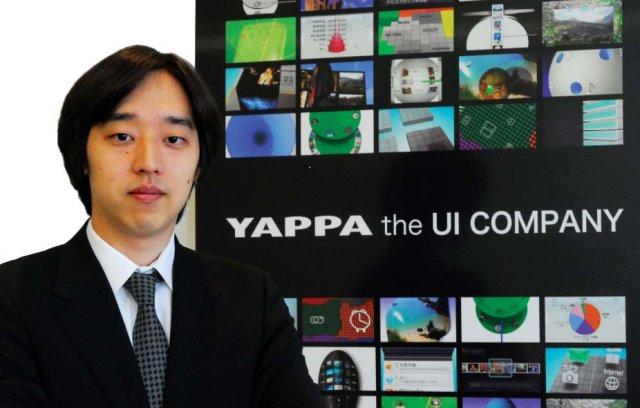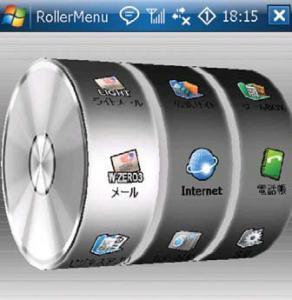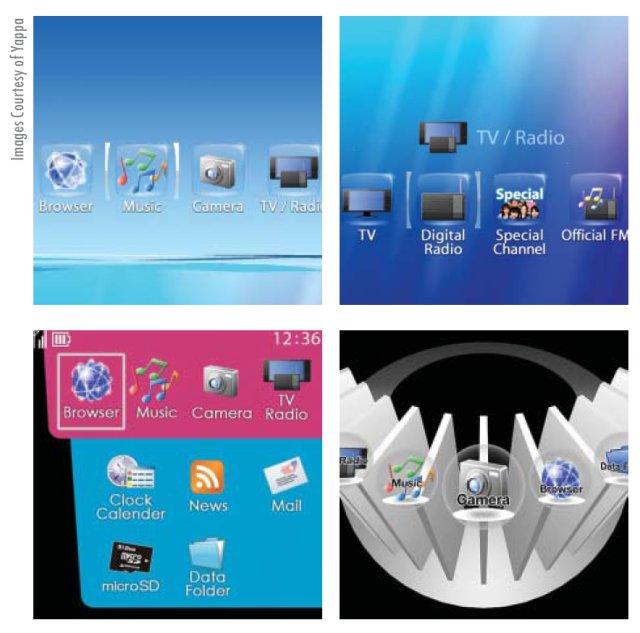CEO Interview: Masahiro Ito
By Hugh Ashton

YAPPA was established in 2000 by Masahiro Ito, a 17-year-old high school student with an interest in design. After attempting to build a network to gather retail customer data using mobile phones and discovering that the mobile phone market at the time could not support his vision, he moved into the field of computer 3D design by partnering with and eventually acquiring an Israeli company that had developed a product that Ito considered would be valuable in Japanese e-commerce.
Now, nearly eight years on, YAPPA has moved beyond its original visions, expanding its operations and establishing itself in Japan and overseas as a significant presence in technology and design. Following notable success in marketing its web 3D modeling technology to a prestigious global list of auto manufacturers, such as Ferrari and Maserati to name a few, YAPPA is using the skills perfected in these markets to break new ground.
Positioning YAPPA as “the UI company,” where UI stands for “user interface,” Ito is working to bring intuitive, easy-to-use, and exciting UIs to electronic products by embedding its technology in mobile phones, gaming devices, and the like.
CEO Ito talked to J@pan Inc
In a way, you’ve come full circle, from design, through technology, back to design? That’s one way to look at it. 3D imaging is one of the best ways to explain the world, and so adapting our expertise in this area was a natural progression for us when it came to user interfaces.
Tell us about the people behind YAPPA? In Japan, we have about 75 people, including some part time workers I started with years ago. The Israeli operation — now 25 people — concentrates on our embedded business, and over in Paris we have a design team that collaborates with our 15 designers in Japan. We have a rare combination of skills and dedication from our employees that not many companies can provide.
So every element in the global team is doing what they do best? That’s right. We’re maximizing the skills of the different teams. In a broad sense, Japan does not really have a history of innovation. But it does have a long and proud history of taking ideas and making them better—turning concepts into products. And that’s exactly what we are doing here in Japan with the Israeli concepts, and what we have always done with these brilliant ideas—turned them into great products that are appealing and easy to use. It took us two years at the beginning to take the ideas and technology, and convert them into a workable product. We set ourselves aggressive goals like “make a 3D model of this watch in two hours,” and then we continuously refined the process and the design. Constantly driving ourselves to push our limits has helped us gain success with our 3D modeling, as well as some other products that came out of the 3D field.
Where does design fit into the picture? Design is one of our core strengths. We have the ability to do design and technology in parallel.
Technology companies tend to be weak on the design side, so that is where there is a market need and opportunity for us. Companies such as Apple and Nintendo attract a lot of attention because they are one of the select few that have done it right. Apple’s iPhone is not necessarily that technically advanced. It’s about feel and usability. People buy iPhones because they “feel” more advanced.
IPhone’s raised the bar on usability for portable phonee? Yes, indeed. Mobile phones, both in Japan and the US, are excellent examples of where the makers have added too many features for people to be able to use them without having a proper interface to assist them.

How does YAPPA help the manufactures of these devices? From a technology perspective, we have a competitive product with a collection of 3D/2D effects libraries that go down to the bare metal; it is OS independent, and easy to implement. We help makers by dramatically reducing development costs and time. And by doing so, manufacturers can concentrate on functionality, without having to worry about the programming aspect. For the user, our UI designs are visually appealing and created with user-friendliness in mind.
As well as mobile phones, on what other devices can we expect to see YAPPA interfaces? Besides our original web 3D solution, and mobile phones, we are also working with set-top box makers, karaoke machine UIs, gaming devices, and other consumer electronics. We have a lineup of exciting announcements coming up through the course of the year.
One last question. What does “YAPPA” mean? YAPPA has some positive aspects in Japanese: it’s a common abbreviation for yappari (exactly, absolutely) and you can also write it out in Japanese as 8 and 8—it’s a double infinity sign, and 88 has good connotations in Japanese culture.






